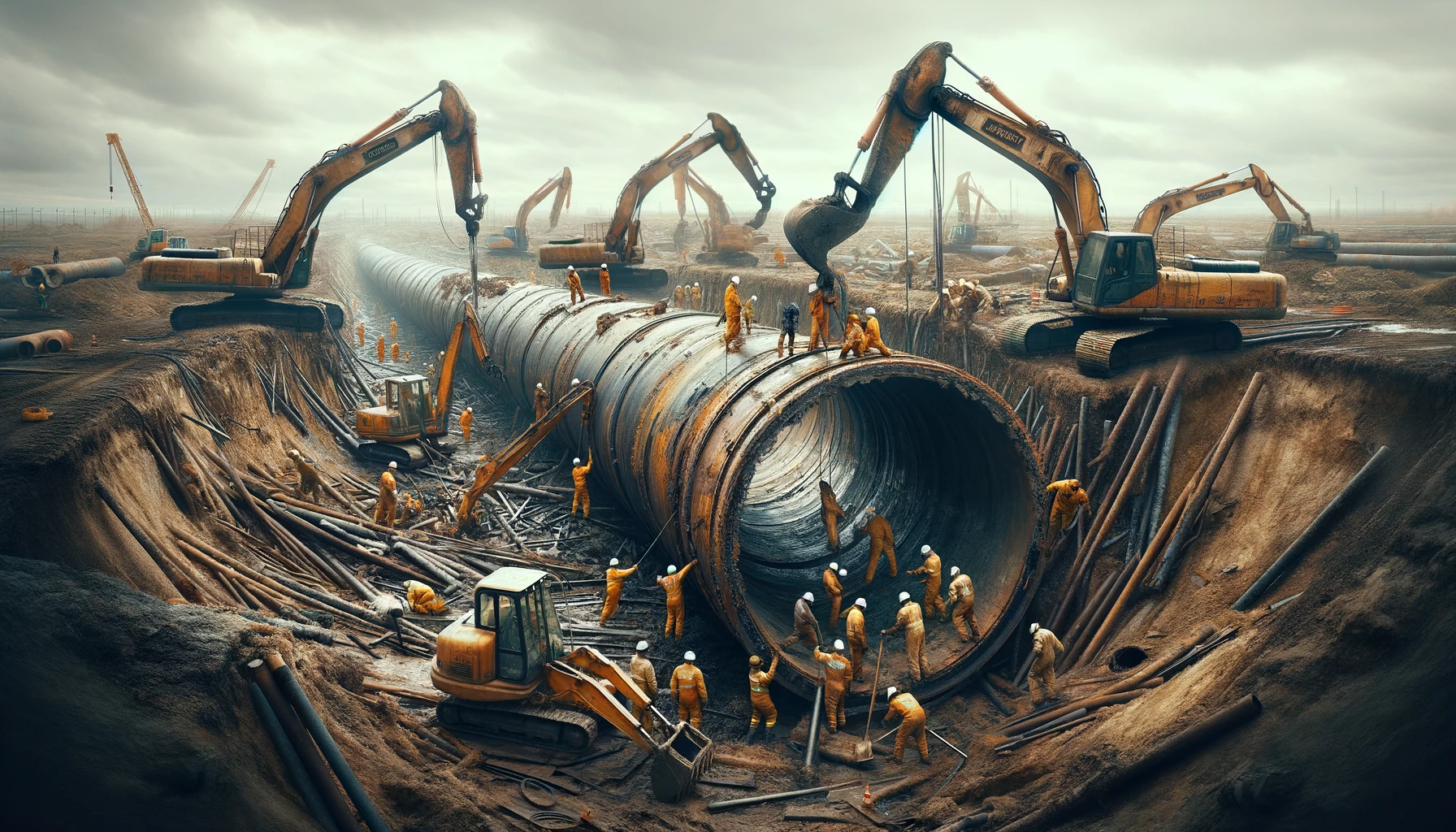Pipe Decommissioning Calculator
Measuring underground pipes typically involves various techniques and tools depending on the specific requirements such as depth, material, location, and environmental conditions. Here’s a general process:
1. Preparation and Planning
- Site Survey: Conduct a thorough site survey to understand the layout, environment, and potential obstacles.
- Utility Marking: Use utility marking services to identify and mark existing underground utilities to avoid damage.
2. Choosing the Measurement Method
- Direct Measurement: For accessible pipes (trenched or exposed), use measuring tapes or laser distance meters.
- Indirect Measurement: For buried pipes, consider methods like Ground Penetrating Radar (GPR), electromagnetic induction, and acoustic methods.
3. Using Ground Penetrating Radar (GPR)
- Equipment Setup: Calibrate the GPR unit based on the soil type and expected depth.
- Scanning: Move the GPR unit systematically over the area. GPR emits radar waves that reflect off the pipe, creating an image.
- Data Interpretation: Analyze the radar images to determine the pipe’s depth and position.
4. Using Electromagnetic Induction
- Signal Application: Apply an electromagnetic signal to the pipe using a transmitter.
- Detection: Use a receiver to trace the signal, indicating the pipe’s path and depth.
- Data Recording: Record the measurements along the detected path.
5. Using Acoustic Methods
- Sound Waves: Generate sound waves that travel through the ground and reflect off the pipe.
- Listening Devices: Use listening devices to capture the reflected sound waves.
- Analysis: Analyze the sound patterns to locate the pipe and measure its depth.
6. Verification and Documentation
- Cross-Verification: Use multiple methods to cross-verify the pipe location and measurements.
- Documentation: Document all findings, including pipe location, depth, diameter, and any obstacles or anomalies.
7. Safety Precautions
- Protective Gear: Ensure all personnel wear appropriate safety gear.
- Regulatory Compliance: Follow all local regulations and standards for underground work.
8. Post-Measurement Analysis
- Data Analysis: Compile and analyze all data collected.
- Reporting: Prepare a detailed report with diagrams, maps, and measurements.
- Maintenance Planning: Use the data for maintenance planning or further construction activities.
This process ensures accurate measurement and location of underground pipes, minimizing the risk of damage during excavation or construction.
